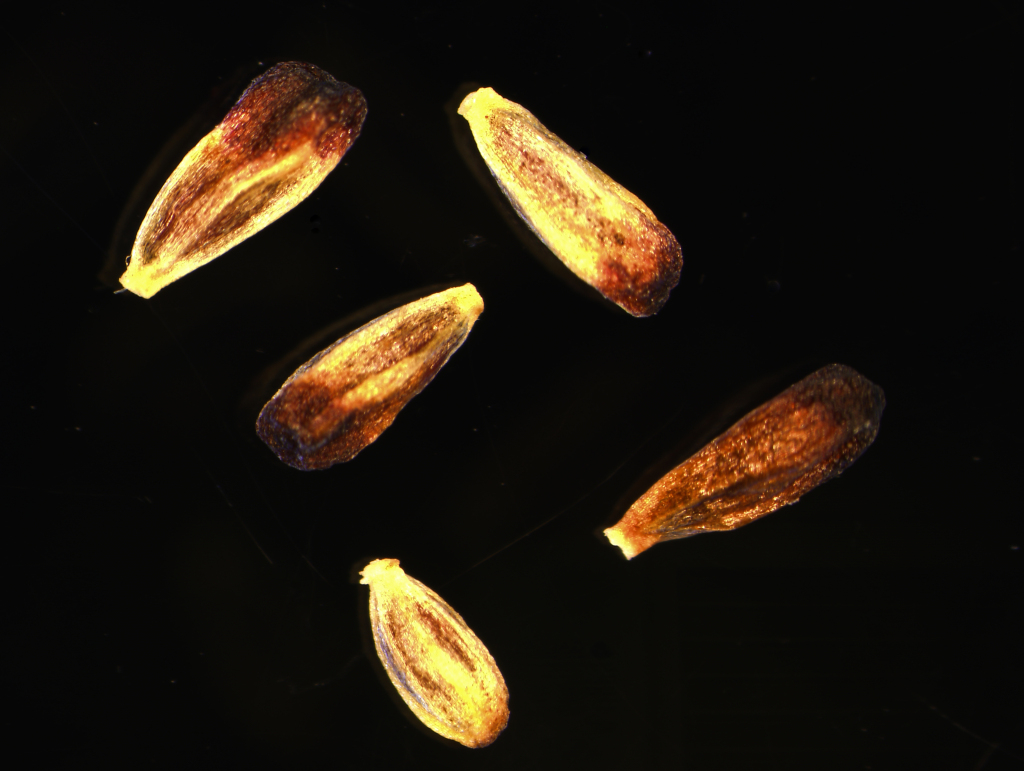Abrotanella nivigena
(F.Muell.) F.Muell. Snow-wortProstrate, rhizomatous herb. Leaves linear, 7–15 mm long, 1–1.5(–2) mm wide, fleshy, obtuse, margins hairy at base, somewhat recurved. Capitulum solitary, subsessile in flower; peduncle elongating to c. 2 cm in fruit; involucral bracts oblong, 3–3.5 mm long, obtuse or truncate, margins scarious. Florets not strongly dimorphic, corollas 3- or 4-lobed, white or white with purple lobes; outer florets 7–17, 1.6–1.9 mm long; inner florets 4–12, male, 2–2.8 mm long. Outer cypselas obovoid, c. 2 mm long, 3- or 4-angled, distinctly ribbed, minutely papillose, apex inconspicuously rimmed, brown, often with a red-brown tip. Inner cypselas infertile, smaller, often compressed. Flowers Dec.–Jan.
EGU, HNF, VAlp. Also NSW. Confined to the higher parts of the alps in the vicinity of Mts Bogong and Nelse, where very rare. Occurs in wet gravelly peats in open herbfield and heathland communities.
Superficially similar plants from the highlands of Papua New Guinea were previously included in A. nivigena, but molecular evidence (Wagstaff et al. 2006) indicates that the New Guinean plants are distinct. The name Abrotanella papuana Moore has been resurrected for these plants.
Jeanes, J.A. (1999). Asteraceae. In: Walsh, N.G.; Entwisle, T.J., Flora of Victoria Vol. 4, Cornaceae to Asteraceae, pp. 652–666. Inkata Press, Melbourne.
 Spinning
SpinningWagstaff, S.J.; Breitwieser, I.; Swenson, U. (2006). Origin and relationships of the austral genus Abrotanella (Asteraceae) inferred from DNA sequences . Taxon 55(1): 95–106.


